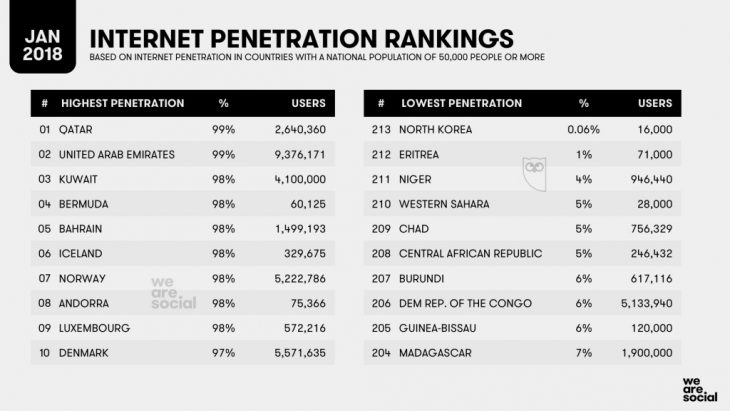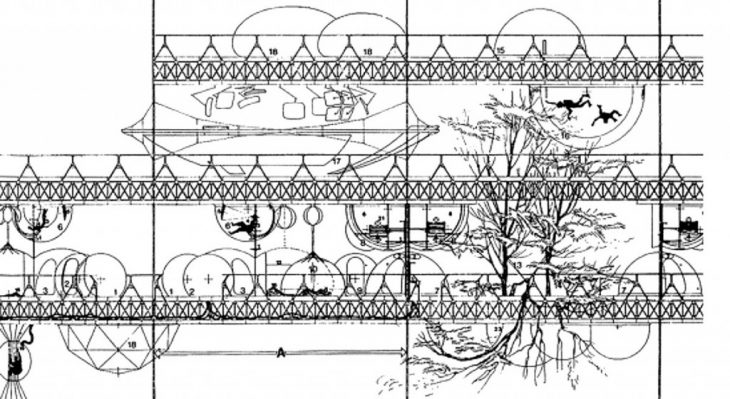THE INTERNET OF THE COUNTRYSIDE?
Introduction
[…] A city is an ecosystem where a community of citizens interacts with a physical structure in a permanent exchange of material and energy aimed at improving human life. […]
This definition was given by Vicente Guallart in one of his books (Internet has changed our lives but it hasn’t changed our cities, yet). That permanent exchange of material and energy and that citizen interaction is nowadays driven by digitalization and technology.
We could say that the Internet of Cities is a combination of the physical city, its innovation ecosystem(s) and the hyperspace component that complements them. In a way, cities change as much by ideas as they do because of things or technologies. It is ideas or events (like the current pandemic) that shape the way that we use, respond and react to said technologies.
As Deyan Sudjic mentions in his dissertation, the speed of change […] we will need to find ways of using technology to reassert the fundamental qualities of the city in the digital realm. […]. Digital technology allows us to be more socially engaged and that has clearly been proved during the recent pandemic.
The form that the new digital city will take is still uncertain. Over the past few months, COVID-19 dealt cities a one-two punch: It made density itself seem like a risk, at least for the short term; and it showed that many people can work independently of location and be equally productive without constant physical interaction with colleagues and customers. What does this mean for cities? Will the conditions that drove the growth of cities for the past 20 years remain relevant over the next 20 years? Is the current form of urbanization the culmination of the 20th Century and, thus, the culmination of the era of the train and the automobile?
The 21st Century will be shaped by forces that we are barely beginning to understand. The Internet of Things has the potential to pave the way for a new scenario, most cities intend to transform around the mainstream idea of “Smarter Cities” with data collected from interconnected devices in our urban environments continuously monitoring, sensing, and actuating on demand. However, it is quite hard to predict when smart cities will be a reality or if they will remain as fiction. The train was complemented by the telegraph. The automobile was complemented by the television. What form of transportation will complement the internet?
This question is critical when we think about the evolution of human settlements. The obvious suspects are new forms of transportation such as autonomous vehicles, drones, “flying cars”, and even simpler devices such as connected scooters and mopeds but there is a more radical option, which may propose a new concept of “city”. The internet is a form of both communication and transportation: it will not encourage us to move anywhere in particular but, instead, it will allow us to live anywhere we want.
What is the extent of the ‘Internet of Cities’? What if we could still develop certain processes without a need for transportation?
How has the pandemic boosted the implementation of applications in favor of the future and technology of the cities (Internet of Cities)?
The pandemic, a trigger of technological implementation?
The pandemic lockdown has shown how much healthier city life could be without crowded streets and polluted air. In fact, it has boosted the development of new technologies towards a more sustainable and greener shift. Carlo Ratti points out “The current crisis is dramatic, but it can also be seen as a global testing laboratory”.
We have seen examples of this in different layers of the city. Michael Ganse, an engineer with German telematics, believes there’s a big opportunity for city planners to transform inner-city mobility in line with smarter principles, including traffic control and information, smart parking management, street-usage fees and pop-up bicycle lanes encouraging people to leave their cars at home. We also have seen how the extension of bike lanes in Barcelona could lead to a more permanent solution towards sustainability and a deeper understanding of the mobility flows carried out by INE (Spanish Institute of National Statistics) during the lockdown. In essence, with the government warning of public transport dangers in the form of COVID-19 and our reliance on cars, is there an opportunity for Cities to create better transport systems and methods?
We have also seen how more sources of open data have been published or recently made open source. City authorities can use the data gathered from their own monitoring stations of traffic flows, road construction activity, and car emissions and make them available for citizens. The situation has also brought collaborations we never thought could happen such as the one between Google and Apple for the development of an App. Could institutions such as FabLab create collaborative networks to share solutions for city issues and developments?
Of course, the social distancing factor has also triggered the development of AI and autonomous technologies for logistics to prevent human contact. How will cities and citizens be affected by this? Will this bring more decentralization of the population?
Densification vs Countryside
Has COVID-19 changed the expectations of city growth and densification of the cities?
The city vs the countryside. How does the Internet of Cities include the Internet of the Countryside?
On March 22, New York Governor Andrew Cuomo said “There is a density level in NYC that is destructive”, calling for the city to “develop an immediate plan to reduce density.”
What’s more, Kotkin concludes that the fallout from COVID-19 in “a globalized world where pandemics spread quickly will push workers back into their cars and out to the hinterlands.” Offices from all over the world have rapidly transitioned to remote work, accelerating the trend towards decentralized business. Could the change prove permanent?
The fact that 50% of the global population now lives in cities has become an excuse to ignore the other 98% percent of the world’s surface: the countryside.
On the other hand, according to the Globe and Mail’s Doug Saunders, “the biggest cities are also the safest places in the world, only huge cities have the resources and the reserve armies of medical talent to tool their health-care systems up to pandemic-level capacity in time to save lives”.
It is difficult to tell how urban development will work in the future. The attitude of people after a pandemic could probably lead to further development. Should we reconfigure the infrastructure of the outskirts instead of focusing on city centers or rethink how we create and convince our neighborhoods rather than creating a larger and larger outskirt zone?
However, suburbanization has become an important trend partly as a concomitant of technology development and demand boosts due to the outbreak. The most likely outcome for the pandemic is that people will change their behavior supporting suburbanization. Consequently, the development of high-technology transportation such as high-speed trains will be more challenging following the demands. The pandemic reminds us that it is important to think of the health of the city. How can we handle an emergency and respond to it rapidly? How does the internet of cities make cities safer?
For example, from the existing technology, we can follow data collected from interconnected devices in our urban environments continuously monitoring, sensing, and optimizing management such as tracking the virus and responding to it. Not only does the internet of cities have to design, but also revolutionize the physical health system to suppress any clusters of cases. South Korea is an example of this, pioneering drive-through testing facilities that are the combination of digital and physical capacity to provide services. What if we learn from the pandemic to reinvent new infrastructure in the city. Redesign of urban services such as movement to connect the citizens and accommodate them such as green points (waste-management in Barcelona). It also has mobile-picked up points that can move following citizen demand.
During the outbreak, the planet has stopped and recovered from the suffering of human consumption. The impact affects not only the environmental issue but also the global economy. This will most likely increase poverty and inequalities at a global scale, making the achievement of solving problems even more urgent. Most major economies will lose at least 2.4 percent of their GDP. As a result of the global system, the sharing economy that was the trend before the outbreak changed and cars are ‘so cheap’ to push the car market, that living in the big cities has become riskier than living in rural areas during the quarantine period. Consequently, people are more mobile and move to rural areas as urban areas are becoming increasingly unpleasant places to live due to air pollution, crime and traffic congestion.
From urban to rural and possibly to increase the trend of motor-homes as people can work from their homes as a result of a growing number of first-time buyers boosting motor-homes as consumers look to use recreational vehicles for socially distant travel and as mobile offices. Consequently, the urban footprint has decreased as people consume less than usual. If the life system has changed, what about the city? The city’s infrastructure has to design for mobile-living that can lead from “temporary” to the new permanent.
Conclusion
After the pandemic disruption, we crave the calm of normality but can we ever really define what “normal” is? Since “permanent to temporary” changes, stay-at-home orders, and travelling for very specific reasons like shopping or health needs and remote work were introduced, suburbanization has become a stronger trend and the pressure to improve transportation and social connection has been redefined. What does “normal” really mean?
What if we learn from “temporary” during the outbreak to create the new permanent, will it be a better future that will make humanity survive with greater flexibility?
What if we apply the idea of the Internet of Cities to boost the concept of smart cities as result of the rapid change of technology, changing the way people work, live and causing several impacts afterwards.
First of all, it is necessary to redefine the way to work. Many people have moved from rural to urban areas due to three main causes of urbanization since 1950, the first reason being lack of resources.
- Reduction of migration // Housing development
Extracting the idea of the Internet of Cities does not only change the way we will live but also provides a hint of what may happen next. The major problem we are facing as the population grows is that we have insufficient housing options.
- Urban Sprawl
- Equality of opportunity and education
- New culture on the outskirts of Cities
References
- Hans Schaffers, 2012. Smart Cities as Innovation Ecosystems sustained by the Future Internet. Esoce.Net.
- Alfred Herrhausen, 2018. Shaping cities in an urban age. London School of Economics Gesellschaft.
- Rem Koolhas, 2020. Countryside. OMA.
- Richard Florida, 2020. How Life in Our Cities Will Look After the Coronavirus Pandemic. Foreign Police FP
- El Español, 2020 ‘Contact tracing’: el sistema seguro de Apple y Google contra el COVID-19.
- Erin Duffin. Impact of the coronavirus pandemic on the global economy. 2020. Statista.
- Sophie Davies. 2020. This is how coronavirus could reshape our cities forever. World Economic Forum
- IoT, 2020. Smart Cities of the Future Powered.
- Teralytics, 2020. Mobility and COVID-19.
ToC. THE INTERNET OF THE COUNTRYSIDE? is a project of IaaC, Institute for Advanced Architecture of Catalonia
developed at Master in City & Technology in (2019/2020) by:
Students: Byron Cadena, Alejandro Quinto, Pawitra Bureerak
Faculty: Mathilde Marengo



